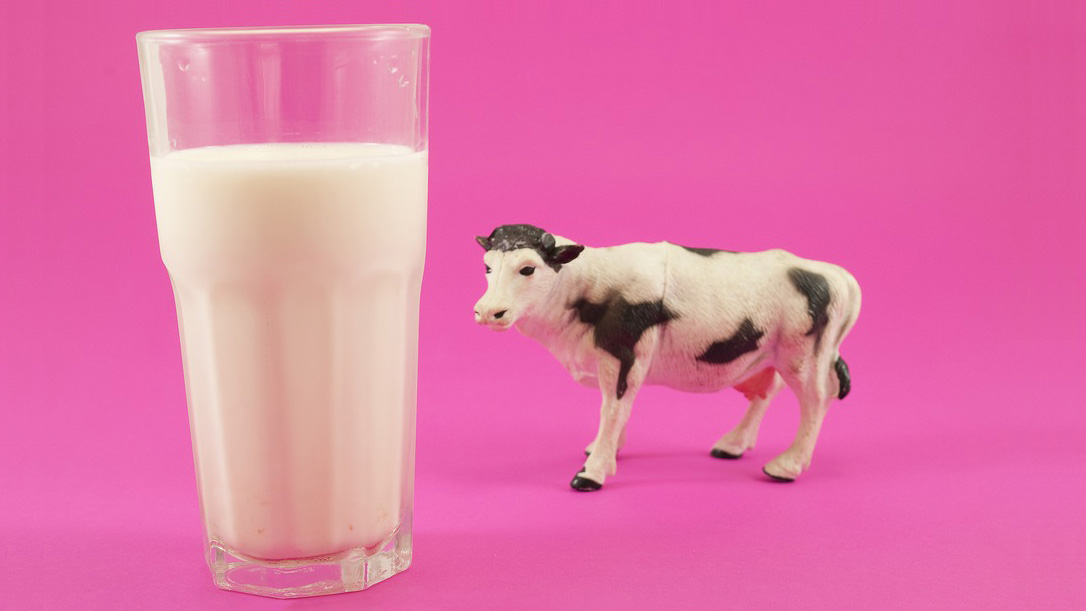Q. Are any kinds of non-cow pseudo-milk (i.e. almond milk, soy milk, coconut milk) noticeably less environmentally harmful than cow’s milk? If so, which is “best”?
Benjamin
Connecticut
A. Dearest Benjamin,
To drink or not to drink? That is the question when it comes to milk and its suite of non-dairy substitutes, isn’t it? I must admit your query is a slippery one, without many clear, substantiated answers. But we can make some definitive statements about dairy and its imitators – ready to wade in?
What is clear is that the worldwide dairy industry has a substantial impact on the environment. First, there’s the production of all that grain to feed the cows, which requires vast swathes of land, tons of fertilizers, and lots of water. And of course there are the animals themselves, which require more land and water. Processing raw milk into the products that line the dairy aisle, and bringing them to market (in energy-chugging refrigerator trucks) also takes a toll. And don’t forget the energy and materials used to package the milk.
Oh, and let’s not neglect the stinky topper: Cows release lots and lots of methane, a greenhouse gas 20 times more potent than carbon dioxide, through their normal digestion and accumulating manure. Worldwide, the U.N.’s Food and Agriculture Organization reports the dairy industry accounts for 4 percent of human-caused greenhouse gas emissions. Here in the U.S., your daily glass of milk accounts for 2 percent of our countrywide emissions — in fact, one gallon of the white stuff is the equivalent of 17.6 pounds of carbon dioxide.
And if you’re not disturbed enough, visit our discussion of the animal welfare implications of conventional dairy here. Starting to wish you’d left Santa a tall glass of milk alternative a few weeks ago?
It stands to reason that a plant-based product would have a lighter impact on the planet than an animal-based one for the usual reasons: Veggie production uses far fewer resources than livestock. One 2009 study found that an omnivorous diet uses 2.9 times more water, 2.5 times more energy, 13 times more fertilizer, and 1.4 times more pesticide than a vegetarian diet.
Still, it’s not so easy to line up the milks in a glass-to-glass comparison. For one, alternative milks require lots of processing, and their primary ingredients may travel great distances to reach your refrigerator — whereas theoretically, you could buy a minimally processed gallon from a cow raised humanely right down the road. But with that caveat, it’s still safe to say, for all the reasons cited above, that non-dairy “milks” have the lighter ecological footprint.
So which alterna-milk is best, environmentally speaking? I’m going to dodge that question, Benjamin, because I couldn’t find much solid data directly comparing all varieties, and I don’t want you dressing your cereal based on untested claims. I’m also going to dodge the question of taste differences between the options and their varying nutritional contributions (a whole ’nother carton of milk), though I will gently remind you that calcium comes from plenty of non-dairy sources, too.
I did uncover one life cycle analysis commissioned by a coconut milk company that found (surprise?) that coconut milk requires less energy and water and produces fewer greenhouse gases than almond or soy milk. A few more marks in coconut’s favor: Coconut farming is fairly low impact, requiring little fertilizer or pesticides, and may help sequester carbon. Then again, I doubt you’ll find any local ’nuts up in Connecticut, so the shipping costs must be considered.
We’ve covered the environmental impacts of the popular soy, rice, and hemp milks before. Almond milk, which is shooting up the popularity charts, comes from a healthy nut mostly likely sourced from California. But it requires more water to produce than some other alternatives and doesn’t contain much of almonds’ superfood nutrients. “Milks” made from oat, flax, and quinoa round out the list of even more newfangled options, each with its own set of pros and cons.
What all these plant milks have in common is that most commercial varieties come with additives and extra sugar, not to mention packaging. So instead of directing you to a single “best” anti-milk, let me instead encourage you to try making your own: You’ll avoid the single-use carton, cut down on shipping, and strip out any nutritionally unwanted extras. DIY recipes abound online, but to get you started, here are some ideas for at-home almond milk, coconut milk, soy milk, and a whole bunch more.
No matter which variety or method you choose, know that you’ll be perfectly OK cutting the cow out of the equation. You don’t have to “got milk” to get all the nutrients you need, and choosing a glass of “milk” with your cookies will indeed shrink your snack’s environmental footprint.
Mammarily,
Umbra



